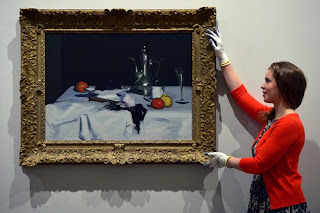It's all in the hanging
A
song recital is like a beautiful bottle of red wine that's shared between neighbours. It's a
point in time when the singer, pianist and audience can sit down together and take a
look at what this hazy, crazy thing is we call Life.
The world is your oyster
The
beauty of life is that there are so many ways to approach it, view it, hear it,
experience it... Ultimately, it's artistic freedom because as a singer, you can
curate repertoire according to the type of world you want the audience to
discover.
To
find the world you want to create, explore themes, characters, philosophies...
Ask the question: In this big old world, what's important to me and what song
repertoire explores this? Not only does
this question help discover new repertoire, it creates a compelling narrative
structure that connects to the audience.
The door into your world
Building the world of the recital from an intention point of view gives the singer a motherboard from which to steer the recital. Or to put it another way, there is a compelling reason to sing. When building the world of the recital, a space needs to be created for the audience to enter in and join the discourse. Similarly, the audience also needs to exit back into their reality at the end of the recital.
To build this space, ask the question: What song will help the audience shift their state into the recital's world? To chunk down that question into manageable pieces: Where is the audience coming from (work, dinner, a weekend) and where do they need to get to (the recital's world)? To help the audience make that journey, what do they need to feel, see, experience or think?
So grab your nearest stylish scarf and get all Jeremy Deller. When looking at the musical and dramatic style/expression of the songs, consider also the space a song needs, and how one song's story can give context to another song's story:
Laying out the world
The
order in which the songs are placed in terms of musical style, key and texture, circumstance, theme and character helps the audience navigate the
recital's world. This process is similar to how an artist would lay out
paintings in an exhibition, or an installation artist would curate the
audience's experience. Poulenc, in Journal de mes Mélodies highlighted this point
further: 'It is all a question of "the hanging", as essential in
music as in painting.'
'If we wish to know about a person,
we ask, what is their story - their real, inmost story? For each of us is a
biography, a story. Biologically, physiologically, we are not so different from
each other; historically, as narratives - we are each of us unique.' (Sacks)
Final thoughts
Rebecca
Solnit makes a very good point in her recent article in Psychologies. She encourages us to become 'conscious
storytellers' by being aware of the stories we tell and why we are telling
them. Although her ideas are wrapped up
in the psychological benefits of telling our life story in a positive narrative
pattern, it can also be applied to the recital platform to help us make the
most of its storytelling opportunities.
Because when we become a conscious storyteller, we see the recital
platform not just as a stage for our best songs, but also as a point in time where we can tell a bigger story that helps us understand our world a little bit better: 'Storytelling is the art we all make every hour.' (Solnit)
References:
Main blog post image: Lily McIver; Scottish Colourist SJ Peploe at the Scottish National Gallery of Modern Art (2012).
Final blog image: Hanging Heads exhibition, Kelingrove Art Gallery and Museum (2006)
Francis
Poulenc; Journal de mes Mélodies;
Kahn&Averill, 2006
Rebecca
Solnit; How do you tell your story?,
Psychologies, August 2013
Oliver
Sacks, The Man Who Mistook His Wife for a
Hat and Other Clinical Tales, Picador, 2011




Comments
Post a Comment